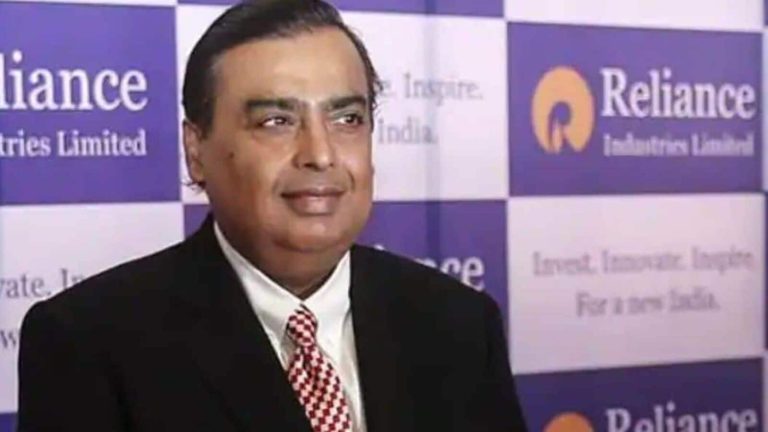Mumbai: Reliance Industries Ltd, India’s most valuable company, beat Street estimates while reporting a 6% growth in its consolidated profit for the January-March quarter on Friday. This came on the back of a resurgence in its retail business and better realizations in telecom even as pain persisted in its core oil-to-chemicals (O2C) business.
The company reported consolidated profit of ₹22,434 crore, higher than the ₹18,471.4 crore consensus estimate of analysts polled by Bloomberg, in the fourth quarter of FY25. The profit in the corresponding quarter in the previous fiscal year was ₹21,143 crore.
Meanwhile, consolidated revenue grew by a tenth to ₹2.65 trillion. The Street had pencilled in a consensus estimate of ₹2.4 trillion.Earnings before interest, tax, depreciation and amortization (Ebitda) grew almost 4% to ₹48,737 crore. Ebitda margin fell 90 basis points to 16.9%. One basis point is 0.01%.
The company also became the first in the country to have a net worth of over ₹10 trillion, it said in a press statement.
Also read | Reliance Consumer biz to see national rollout
The company’s chairman and managing director Mukesh Ambani said that FY25 was a challenging year for business with weak macroeconomic conditions and a shifting geopolitical landscape. “Our focus on operational discipline, customer-centric innovation and fulfilling India’s growth requirements has helped Reliance deliver a steady financial performance during the year,” he said.
Retail and telecom to the fore
The growth was front-led by improved performances in the company’s retail and telecom businesses.
The retail segment, which includes Reliance’s consumer retail and its range of related services and investment in retail business, was on the mend after several quarters of weakness. It reported revenues of ₹88,637 crore during the quarter, nearly 16% more year-on-year. Ebitda for the segment improved 14% on-year to ₹6,721 crore.
“In FY25, the business focused on a strategic recalibration of our store network, aimed at improving operational efficiencies and long-term sustainability,” Ambani said.
Reliance Retail is nearly done with the streamlining of its operations that started during the year, which included shutting down unprofitable locations. There was a net addition of about 500 stores during the year.
Read this | Former Reliance Jio senior executive raises $130 mn to back mid-market startups
The digital services segment, which includes the group’s telecom arm Jio, reported an 18% growth in earnings backed by increased tariffs during the quarter. Ebitda for the segment grew by a commensurate 18% to ₹17,278 crore, retaining its new-found position of being Reliance’s most profitable business.
Average revenue per user (Arpu), a key metric in the telecom industry, improved almost 14% year-on-year to ₹206.2 per month. This was primarily led by an increase in tariff. Jio added 6.1 million customers during the quarter to take its count to 488.2 million subscribers. “Our Digital Services business achieved record revenue and profit numbers,” Ambani said.
Oil dimming
While Reliance’s mainstay O2C business reported an impressive 15% growth in revenue during the fourth quarter, operational parameters continued to deteriorate. Its Ebitda fell by a tenth to ₹15,080 crore. The segment includes refining, petrochemicals, aviation fuel and bulk wholesale marketing as well as polymers, polyesters and elastomers.
“Significant demand-supply imbalances in downstream chemicals markets have led to multi-year low margins,” Ambani said. “Our business teams ensured optimization of integrated operations and feedstock costs to enhance margin capture across value chains.”
Also read | Reliance’s lifestyle brands endured a tough FY24
“It is a decent set of numbers; they beat the market expectations,” said Ambareesh Baliga, an independent analyst. “The retail segment was the one that surprised me the most because after the festive October-December quarter, we expected a muted quarter but that was not the case.”
Balia added that the muted margins of the O2C segment were along expected lines. “In telecom we had expected a slightly higher Arpu, but that did not affect the overall revenue and Ebitda,” he said.
Optimism on new energy
Amongst the company’s numerous businesses, Ambani was optimistic about its nascent renewable energy unit. The company had laid a strong foundation for projects in renewable energy and battery during FY25, he said in the statement, adding that these businesses will become operational in the coming quarters.
“I firmly believe that the New Energy growth engine will create significant value for Reliance, for India and for the world,” he said. The company is investing in a large-scale solar project in Jamnagar, Gujarat, with a total planned capacity of 20 gigawatts (GW). It will include end-to-end manufacturing of solar panels, batteries, and other green energy components.
Full fiscal numbers
For the full fiscal FY25, the company reported less than 3% profit growth due to weakness in preceding quarters. The consolidated bottom line came in at ₹80,787 crore compared to ₹78,633 crore a year ago. Consolidated revenue for FY25 grew 7% to ₹10.7 trillion.
And read | Reliance Industries softens hiring in retail, telecom, cuts duplication
Reliance Industries stock closed flat at ₹1,300.05 on the BSE on Friday compared to a 0.74% correction in the benchmark Sensex. The earnings were declared after market hours.
The company’s board of directors on Friday appointed Anant Ambani, who is a non-executive director, as a whole-time executive director for a period of five years starting 1 May.


